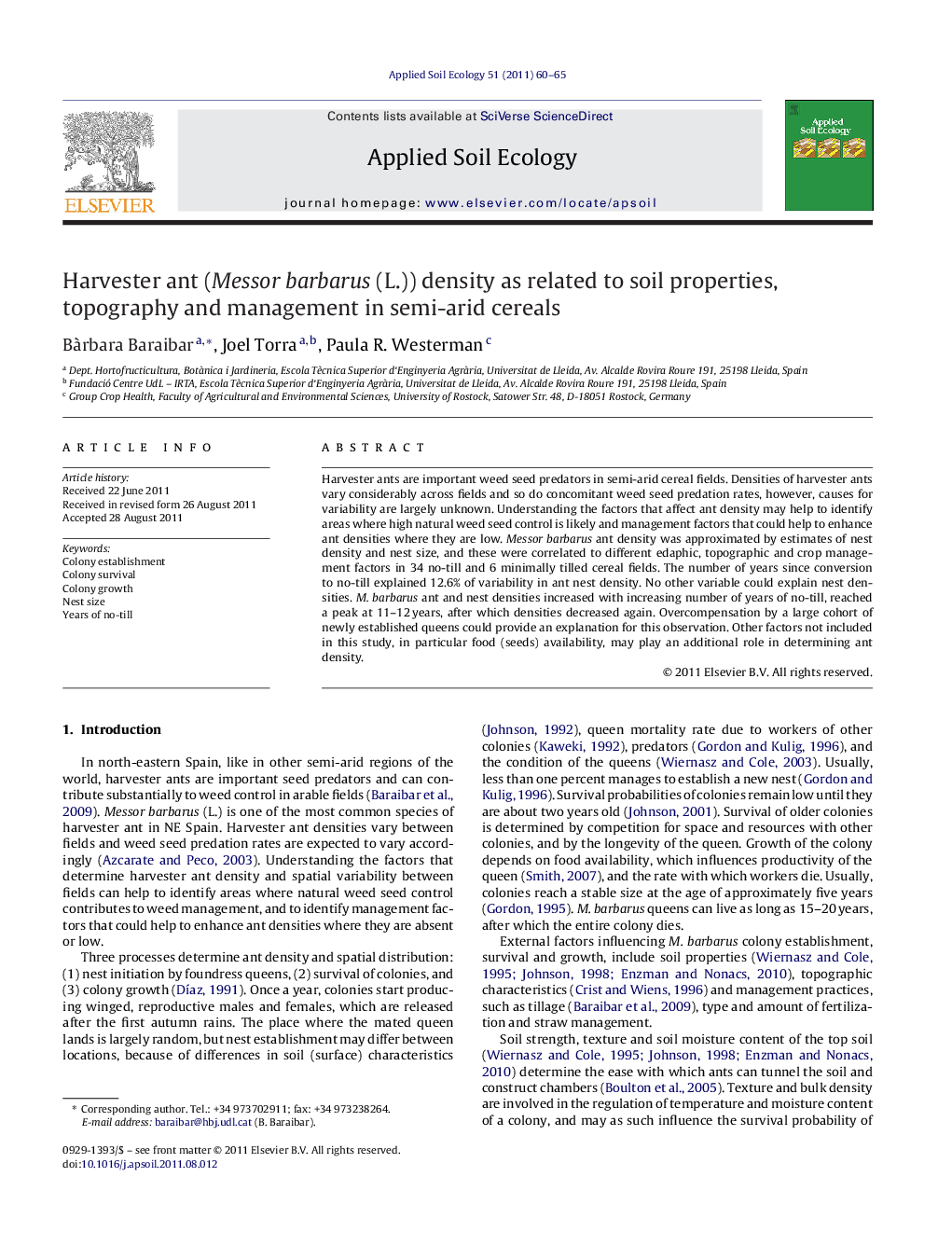| Article ID | Journal | Published Year | Pages | File Type |
|---|---|---|---|---|
| 4382675 | Applied Soil Ecology | 2011 | 6 Pages |
Harvester ants are important weed seed predators in semi-arid cereal fields. Densities of harvester ants vary considerably across fields and so do concomitant weed seed predation rates, however, causes for variability are largely unknown. Understanding the factors that affect ant density may help to identify areas where high natural weed seed control is likely and management factors that could help to enhance ant densities where they are low. Messor barbarus ant density was approximated by estimates of nest density and nest size, and these were correlated to different edaphic, topographic and crop management factors in 34 no-till and 6 minimally tilled cereal fields. The number of years since conversion to no-till explained 12.6% of variability in ant nest density. No other variable could explain nest densities. M. barbarus ant and nest densities increased with increasing number of years of no-till, reached a peak at 11–12 years, after which densities decreased again. Overcompensation by a large cohort of newly established queens could provide an explanation for this observation. Other factors not included in this study, in particular food (seeds) availability, may play an additional role in determining ant density.
► Harvester ants are important weed seed predators in agro-ecosystems. ► Messor barbarus ants densities were assessed in 40 winter cereal fields. ► Ant densities were not related to soil properties, topography and management. ► The number of years of no-till explained 14.2% of variability in ant density. ► Densities of M. barbarus ants increased with years of no-till, peaked at 12 years and decreased again.
